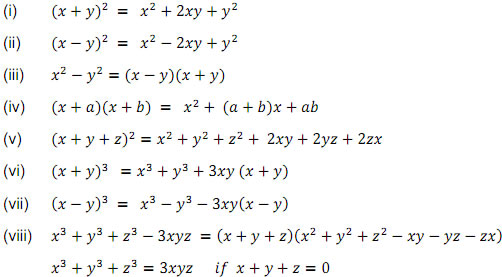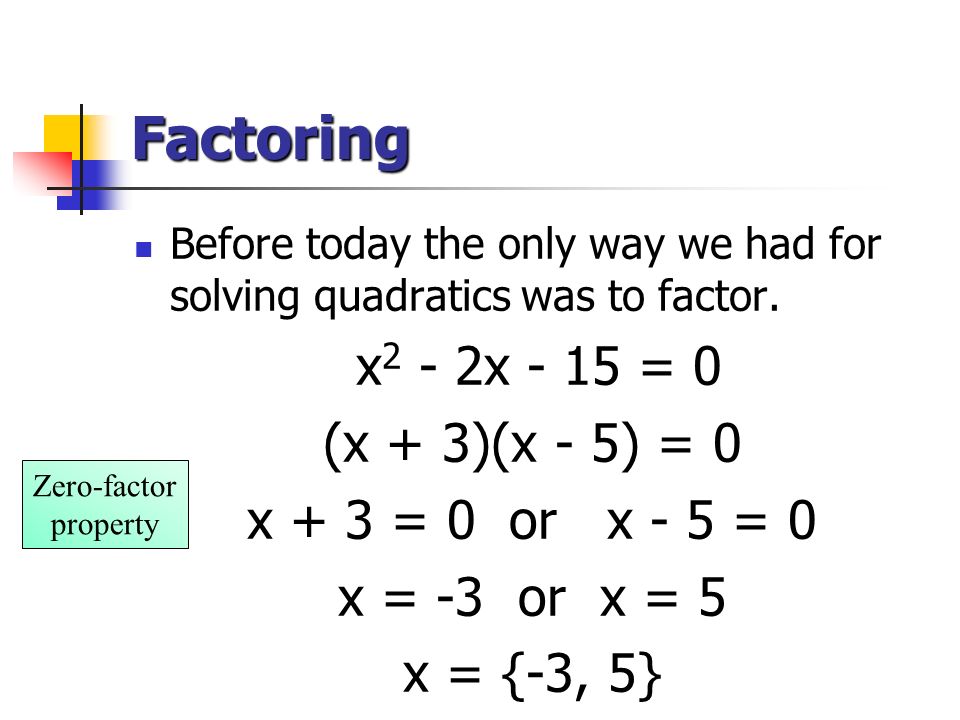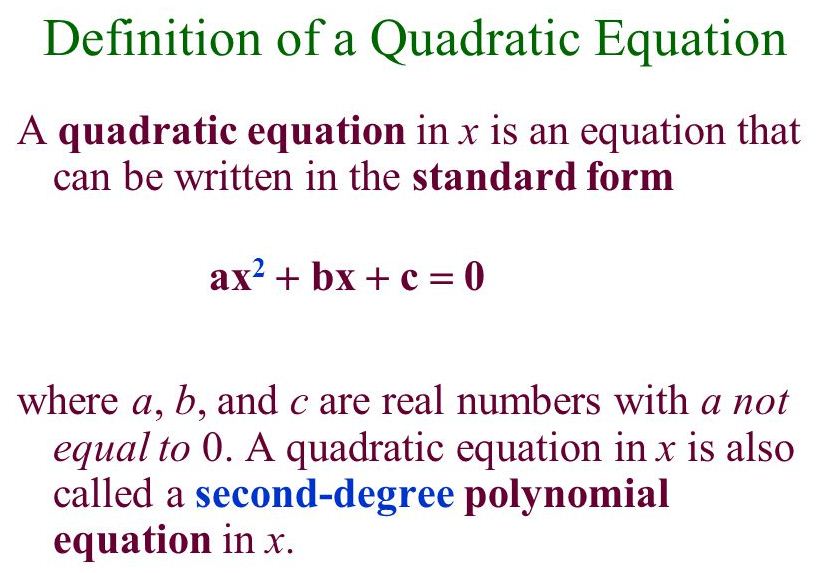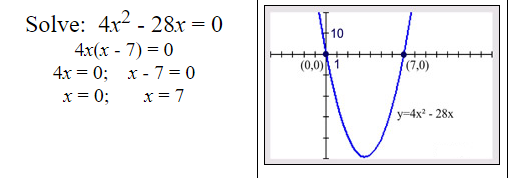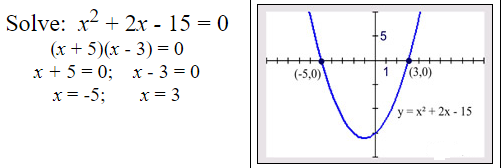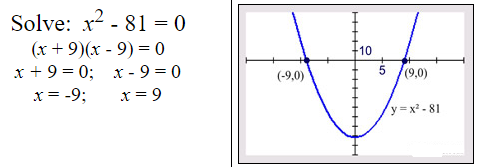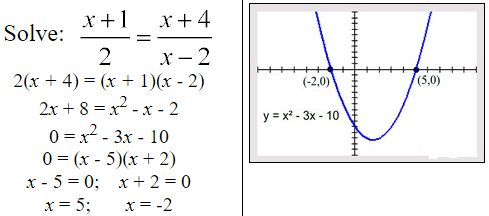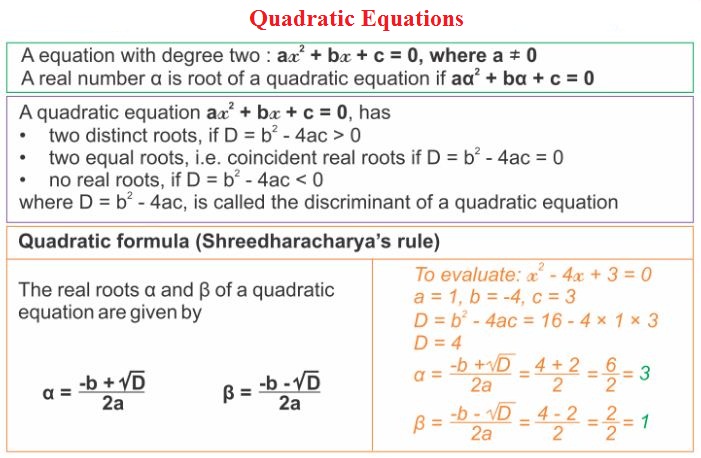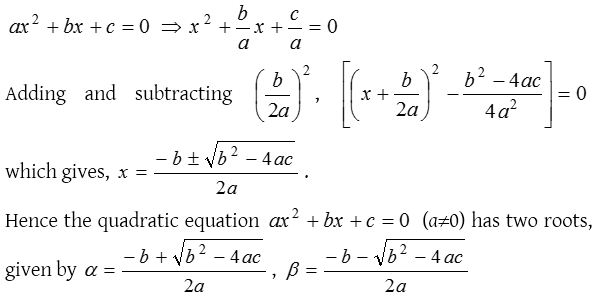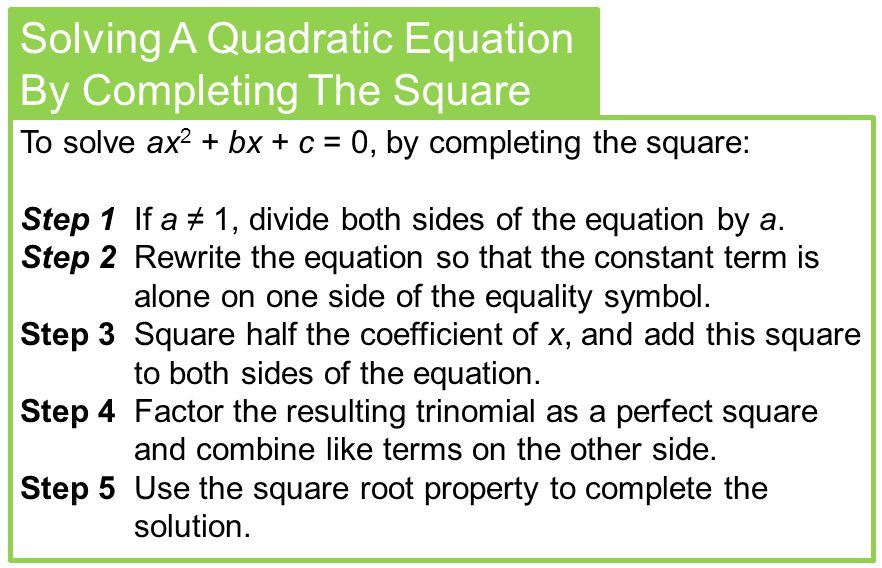Nature Of The Roots Of A Quadratic Equation
The nature of the roots depends on the value of b2 – 4ac. bx2 – 4ac is called the discriminant of the quadratic equation ax2 + bx + c = 0 and is generally, denoted by D.
∴ D = b2 – 4ac
If D > 0, i..e., b2 – 4ac > 0, i.e., b2 – 4ac is positive; the roots are real and unequal. Also,
(i) If b2 – 4ac is a perfect square, the roots are rational and unequal.
(ii) If b2 – 4ac is positive but not perfect square, the roots are irrational and unequal.
If D = 0, i.e., b2 – 4ac = 0; the roots are real and equal.
If D < 0, i.e., b2 – 4ac < 0; i.e., b2 – 4ac is negative; the roots are not real, i.e., the roots are imaginary.
Nature Of The Roots Of A Quadratic Equation With Examples
Example 1: Without solving, examine the nature of roots of the equation 2x2 + 2x + 3 = 0.
Sol. Comparing 2x2 + 2x + 3 = 0 with ax2 + bx + c = 0
we get: a = 2, b = 2 and c = 3
D = b2 – 4ac = (2)2 – 4 × 2 × 3 = 4 – 24
= – 20; which is negative.
∴ The roots of the given equation are imaginary.
Example 2: Without solving, examine the nature of roots of the equation 2x2 – 7x + 3 = 0.
Sol. Comparing 2x2 – 7x + 3 = 0 with ax2 + bx + c = 0;
we get: a = 2, b = – 7 and c = 3
D = b2 – 4ac = (–7)2 – 4 × 2 × 3
= 49 – 24 = 25, which is perfect square.
∴ The roots of the given equation are rational and unequal.
Example 3: Without solving, examine the nature of roots of the equation x2 – 5x – 2 = 0.
Sol. Comparing x2 – 5x – 2 = 0 with ax2 + bx + c = 0;
we get: a = 1, b = – 5 and c = – 2
D = b2 – 4ac = (–5)2 – 4 × 1 × – 2
= 25 + 8 = 33 ; which is positive but not a perfect square.
∴ The roots of the given equation are irrational and unequal.
Example 4: Without solving, examine the nature of roots of the equation 4x2 – 4x + 1 = 0.
Sol. Comparing 4x2 – 4x + 1 = 0 with ax2 + bx + c = 0;
we get: a = 4, b = – 4, and c = 1
D = b2 – 4ac = (–4)2 – 4 × 4 × 1
= 16 – 16 = 0
∴ Roots are real and equal.
Example 5: For what value of m, are the roots of the equation (3m + 1)x2 + (11 + m) x + 9 = 0 equal?
Sol. Comparing the given equation with ax2 + bx + c = 0;
we get : a = 3m + 1, b = 11 + m and c = 9
∴ Discriminant, D = b2 – 4ac
= (11 + m)2 – 4(3m + 1) × 9
= 121 + 22m + m2 – 108m – 36
= m2 – 86m + 85
= m2 – 85m – m + 85
= m(m – 85) – 1 (m – 85)
= (m – 85) (m – 1)
Since the roots are equal, D = 0
⇒ (m – 85) (m – 1) = 0
⇒ m – 85 = 0 or m – 1 = 0
⇒ m = 85 or m = 1
